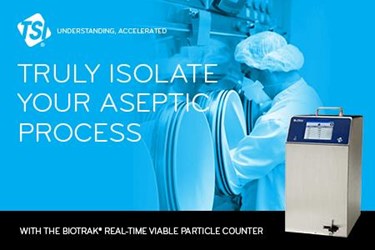Real-Time Airborne Viable Particle Detection

Real-time airborne viable particle detection is challenging. TSI BioTrak Real-Time Viable Particle Counters provide confidence in instant detection and identification of viable particles, relying on the best particle discrimination technology available.
Real-time airborne viable particle detection is challenging. TSI BioTrak™ Real-Time Viable Particle Counters provide confidence in instant detection and identification of viable particles because they incorporate the best particle discrimination technology available. Reliable and immediate detection of airborne viable contamination reduces the risk for Quality Control professionals in adopting this Rapid Microbial Method (RMM) technology.
BIOTRAK REAL-TIME VIABLE PARTICLE COUNTERS
The BioTrak Real-Time Viable Particle Counter monitors cleanroom facilities for microorganisms and more. This instrument combines three important environmental monitoring functions into one product:
1. Total airborne particle counts at 1 CFM flow rate with a 0.5-25 µm range, fully compliant to ISO-21501-4
2. Viable particle counts utilizing patented fluorescence detection technology, incorporating TSI’s 20+ year history of monitoring viable particles in military threat detection applications
3. Filter collection of optically interrogated particles on a standard 37 mm filter for laboratory speciation analysis
BioTrak Particle Counters can be used as a portable standalone instrument or for online measurement to continuously monitor critical processes for viable particle incursions. Connected to TSI’s FMS software, BioTrak Counters deliver real-time viable trending information, real-time response to a viable particle event via an immediate alarm notification to key personnel.
Real-time viable particle detection enables:
• Immediate segregation of product potentially exposed to viable contamination
• Improved root cause investigations
• Immediate initiation of control measures
• Trending of biological particulate levels
• Information for process improvement (PAT)
• Information for process risk management (ICH Q9)
• Feedback for gowning and aseptic process training
